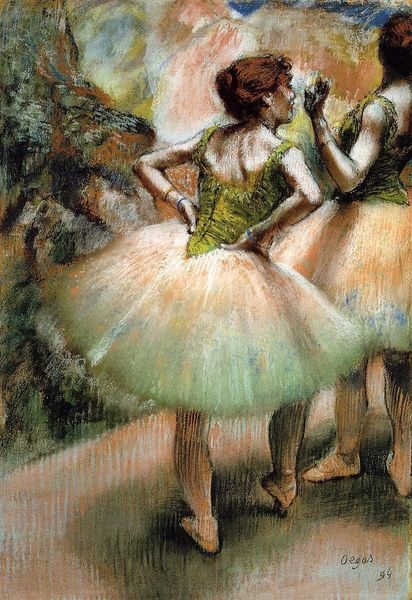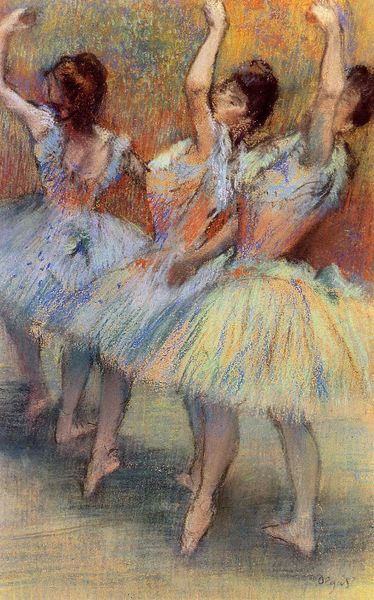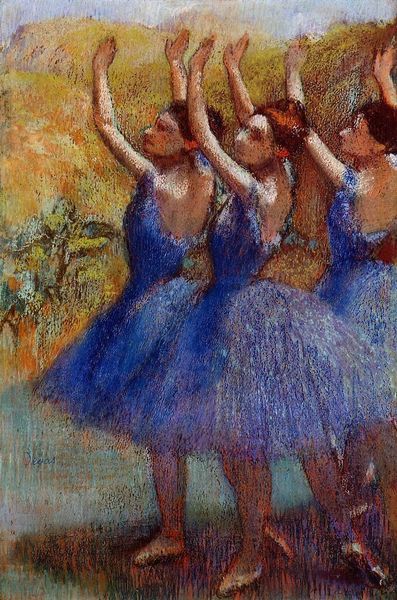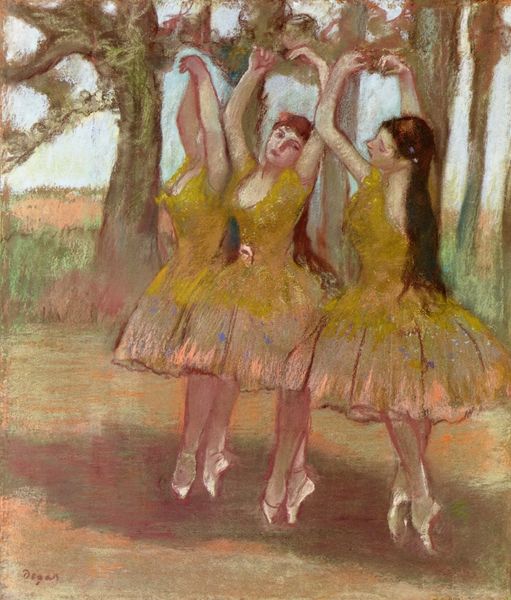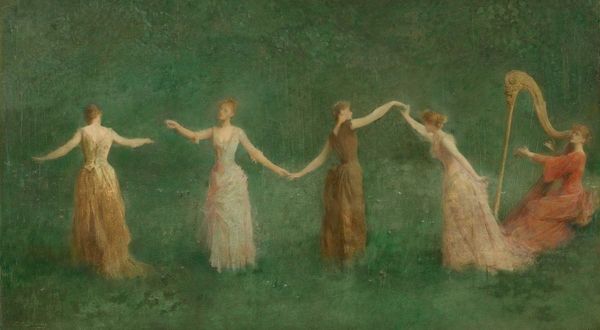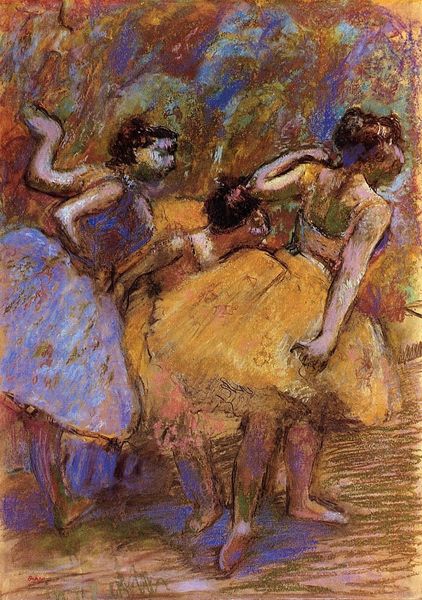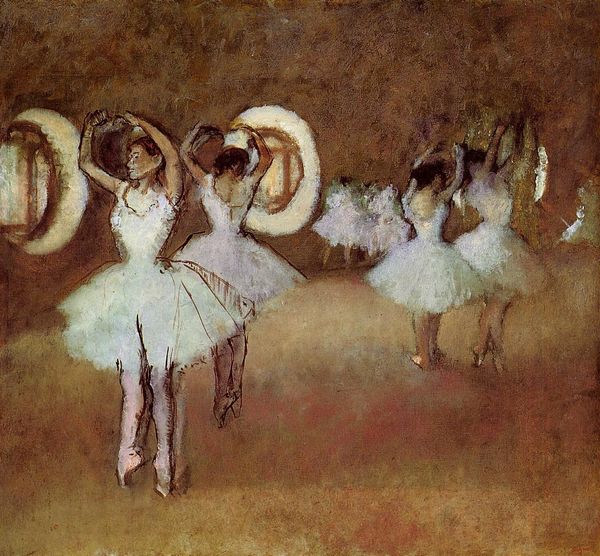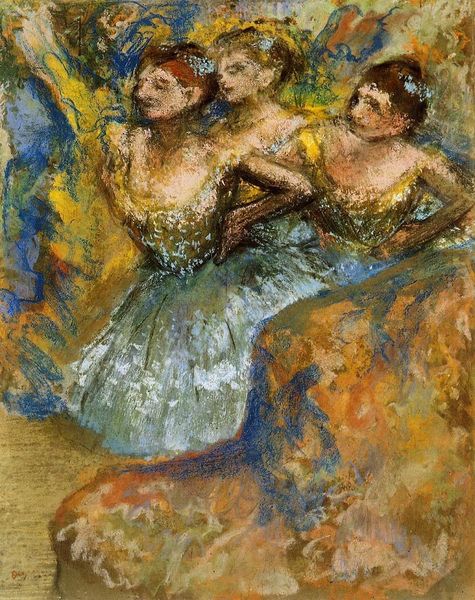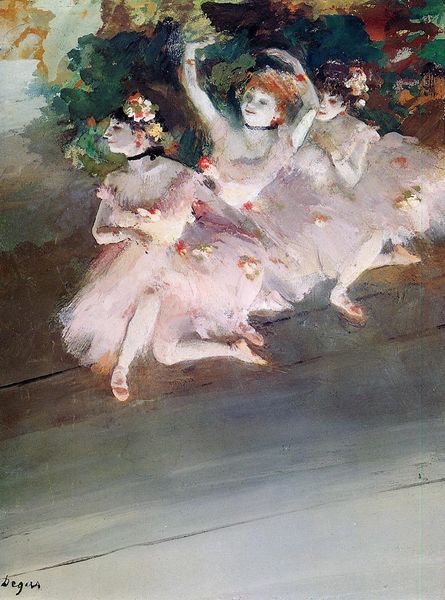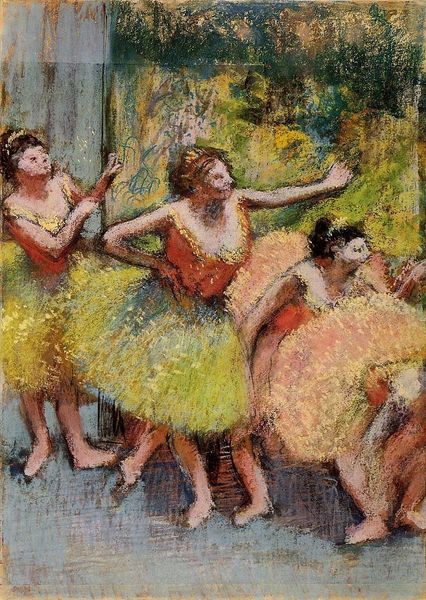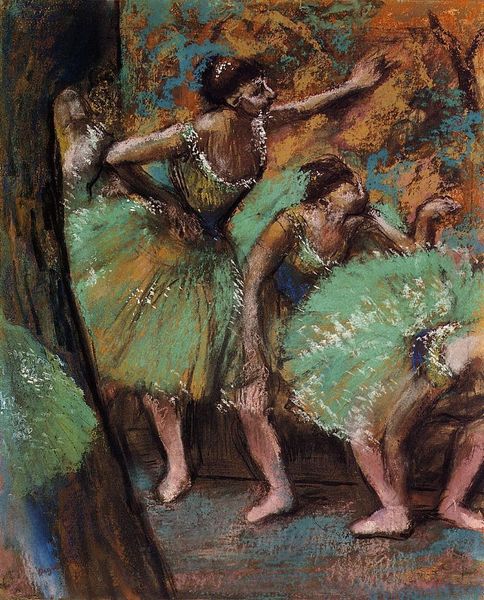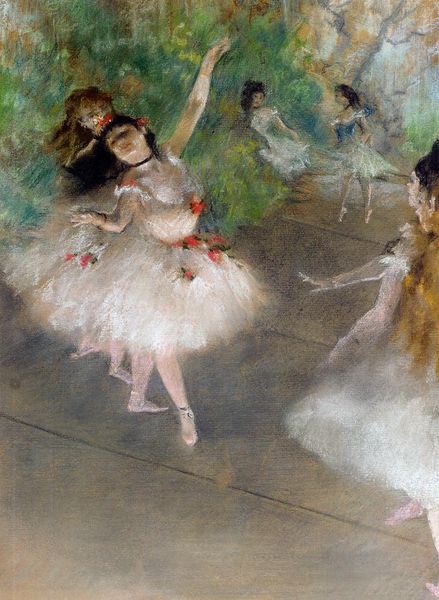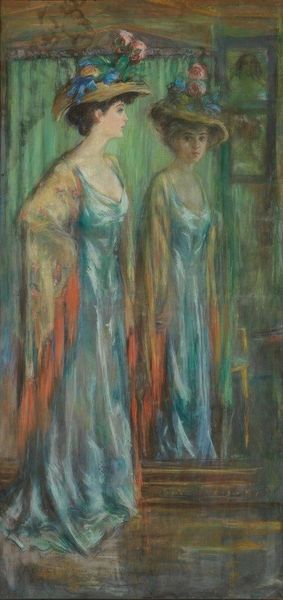
Copyright: Public domain
Edgar Degas made this pastel drawing of dancers in a private collection. Pastels are interesting. They're basically pure pigment, bound loosely together. So, unlike oil paint, they don't allow for blending. You can see how Degas used this quality to his advantage, with layers of dry color giving the dancers’ tutus their volume. This almost sculptural effect is amplified by the composition; Degas didn't idealize these dancers, but showed them from an unusual angle, cropped and asymmetrical. He was working at a time when both photography and Japanese prints were changing artists’ perceptions. Degas wasn't just representing ballet, he was capturing a fleeting, intimate impression of it. He wasn't afraid to use everyday, commercially manufactured pastels to capture the world around him, but he applied them with exceptional skill. So, next time you see a pastel, remember that it's not just a drawing medium, it's a way of thinking about color, light, and form. And it can tell us a lot about how artists see the world around them.
Comments
No comments
Be the first to comment and join the conversation on the ultimate creative platform.
